ELECTRONIC SPACE PRODUCTS INTERNATIONAL
--------------------------------------------------------------------------------
1050 Benson Way, Ashland, OR 97520
Toll Free (800) 638-2581 * Fax (541) 488-8313
E-Mail:
sales@espimetals.com
MATERIAL SAFETY DATA SHEET
I PRODUCT IDENTIFICATION
--------------------------------------------------------------------------------
Trade Name: Rhodium Chemical Formula: Rh
CAS #: 7440-16-6
II HAZARDOUS INGREDIENTS
--------------------------------------------------------------------------------
Hazardous Components % OSHA/PEL ACGIH/TLV
Rhodium 0-100 0.1 mg/m3 1 mg/m3
NFPA/HMIS Hazard Classification: Health: 1 Flammable: 1 Reactivity: 0 Special: 0
III PHYSICAL DATA
--------------------------------------------------------------------------------
Boiling Point: 3727 oC Melting Point: 1966 oC
Vapor Density (Air=1): NA Vapor Pressure: NA
Specific Gravity: 12.4 Solubility in H2O: Insoluble
Appearance and Odor: Black powder or silver colored solid, no odor. pH: Not Determined
IV FIRE AND EXPLOSION HAZARDS DATA
--------------------------------------------------------------------------------
Flash Point: N/A Autoignition Temperature: N/A
Flammable Limits: Lower: N/A Upper: N/A
Extinguishing Media: Use foam, carbon dioxide or dry chemical
Special Fire Fighting Procedures: Firefighters must wear full face, self-contained breathing apparatus with full protective clothing to prevent contact with skin and eyes.
Unusual Fire & Explosion Hazards: Flammable solid. Avoid creating dust for potential dust ignition/explosions.
V HEALTH HAZARD INFORMATION
--------------------------------------------------------------------------------
Effects of Exposure: To the best of our knowledge the chemical, physical and toxicological toxicity of rhodium have not been thoroughly investigated and reported but toxicity is thought to be low. Powdered forms will irritate eyes. Inhalation of rhodium compounds may cause respiratory irritation and respiratory sensitization
Acute Effects:
Inhalation: May cause irritation if exposure is prolonged or excessive.
Ingestion: No adverse effects expected.
Skin Contact: May cause irritation.
Eye Contact: May cause irritation.
Chronic Effects: None known
Routes of Entry: Eyes, Skin, Inhalation, and Ingestion.
Medical Conditions Generally Aggravated by Exposure: None known
Carcinogenicity: NTP: No IARC: No OSHA: No
EMERGENCY AND FIRST AID PROCEDURES:
INHALATION: Remove to fresh air. If not breathing, give artificial respiration, preferably mouth-to-mouth. If breathing is difficult, oxygen should be administered by qualified personnel. Call a physician.
INGESTION: Procedures normally not needed. If large quantities are ingested, seek medical advice.
SKIN: Flush with plenty of water. If irritation persists, call a physician.
EYES: Flush eyes with plenty of water. If irritation develops, call a physician.
VI REACTIVITY DATA
--------------------------------------------------------------------------------
Stability: Stable
Conditions to Avoid: None expected
Incompatibility (Materials to avoid): Strong oxidizing agents and halogens. Violent reactions with ClF3 and OF2.
Hazardous Decomposition Products: None expected.
Hazardous Polymerization: Will not occur.
VII SPILL OR LEAK PROCEDURES
--------------------------------------------------------------------------------
Steps to Be Taken in Case Material Is Released or Spilled: Wear appropriate respiratory and protective equipment specified in Section VIII. Vacuum or scoop the spilled material into a container for reclamation or disposal.
Waste Disposal Method: Retain for recovery of rhodium or dispose of in accordance with State, Federal and Local regulations.
VIII SPECIAL PROTECTION INFORMATION
--------------------------------------------------------------------------------
Respiratory Protection (Specify Type): Use NIOSH-approved dust mask if exposure exceeds TLV.
Ventilation: General exhaust recommended. Use local exhaust ventilation as necessary to control any air contaminants to within their PELs or TLVs during the use of this product.
Eye Protection: Safety glasses. Protective Gloves: Rubber
Other Protective Equipment: Body protection as necessary to prevent skin contact.
IX SPECIAL PRECAUTIONS
--------------------------------------------------------------------------------
Precautions to Be Taken in Handling and Storage: Wash thoroughly after handling, keep container closed, keep away from heat, sparks and flame, and store in a cool, dry location away from incompatible materials. Avoid contact with eyes, skin and clothing. Avoid breathing dust, minimize dust generation and exposure. Use only with adequate ventilation. Do not eat, drink, or smoke in work area.
The above information is believed to be correct, but does not purport to be all inclusive and shall be used only as a guide. ESPI shall not be held liable for any damage resulting from handling or from contact with the above product.
Issued by: Steve Dierks
Date: February 2003



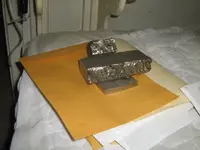
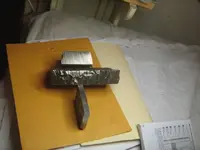
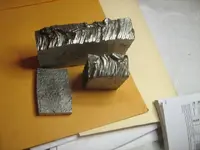
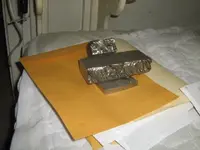
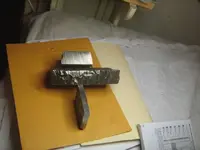
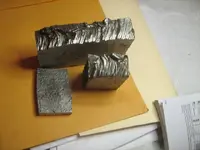

 So you asked the lab to specifically test for Gold and Platinum and nothing else? Is that how it usually works? Just curious.
So you asked the lab to specifically test for Gold and Platinum and nothing else? Is that how it usually works? Just curious.
 8)
8)